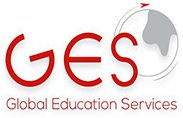“Experiments in Learning: The Benefits and Strategies of Active Learning in Science Education”
Active learning is a teaching approach that focuses on engaging students in their own learning. This approach is highly effective in the teaching of science, where students are often required to understand complex concepts and theories. In this article, we will explore several ways in which active learning can be applied in the teaching of science.
Group activities and discussions
One of the simplest ways to implement active learning in the classroom is by using group activities and discussions. Science teachers can use these methods to encourage students to collaborate and interact with each other, helping to foster a deeper understanding of scientific concepts. Group activities can range from simple brainstorming sessions to more complex problem-solving exercises, and can be a great way for students to explore scientific ideas in a hands-on and engaging manner.
Inquiry-based learning
Inquiry-based learning is a type of active learning that involves students in asking questions and conducting investigations to find answers. In the context of science education, this approach can be highly effective in helping students understand complex scientific concepts by allowing them to explore the underlying principles through hands-on experiments and projects. This type of learning also promotes critical thinking and problem-solving skills, which are essential for success in science.
Interactive lectures
Interactive lectures are another effective way to engage students in the learning process. In this type of teaching, the instructor encourages students to participate in the lecture by asking questions, conducting mini-experiments, or working on problem sets. This type of active learning not only helps students understand the material more deeply, but it also makes the lecture more engaging and memorable.
Technology-based learning
Technology has transformed the way we teach and learn science. Teachers can now use a variety of digital tools to create interactive and engaging learning experiences for students. For example, online simulations, virtual labs, and educational videos can provide students with hands-on experiences that are not possible in the classroom. Additionally, technology-based learning can be personalized to meet the needs of individual students, allowing them to work at their own pace and gain a deeper understanding of scientific concepts.
Active learning is a highly effective teaching approach that can be applied in a variety of ways in the teaching of science. By using group activities, inquiry-based learning, interactive lectures, and technology-based learning, science teachers can engage students in the learning process and help them develop a deeper understanding of complex scientific concepts.

